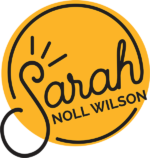
This past week I wrapped up my last flight and last travel keynote for 2022. I had the honor of being the lunchtime keynote speaker at the Human Resources of Broward County conference in Ft. Lauderdale, Florida.
On the flight home, I reflected on the work delivered this year. We’ve spoken to groups from Orlando, Florida, to Calgary, Canada, and everywhere in between. At many of these engagements, we would work with people to learn how to free the elephants in their world, and each time, without fail, the same three topics would always resonate the most deeply with audiences.
There is Power in Naming & Paying Attention to Avoidance
I’ll never tire of hearing from others about how powerful and profound the simple act of naming avoidance habits they see in their organizations and within themselves. Being intentional about noticing and bringing attention to the avoidance behaviors is the first step in freeing the elephants in the room around us.
Sometimes we’ve gotten so good at tolerating the elephant in the room that we no longer realize it’s still there. Or we do not allow ourselves to fully register the presence of an elephant because it is too scary or uncomfortable. The elephant can quickly become the norm if we numb our intuitive senses. It is helpful to figure out what the company of an elephant feels like so we can begin to connect those warning signs with the need to act.
We hear a common limiting belief from our clients that a positive relationship does not have much conflict. Still, a productive relationship is one where all parties can disagree openly, effectively, and respectfully. Those relationships recover quickly from disagreement and do not linger in a conflicted state.
When we allow an elephant to linger:
- Distrust increases, and trust decreases.
- Team members grow disengaged and disheartened.
- Creativity and innovation cannot thrive.
- People spend energy actively avoiding instead of taking action.
- Ongoing stress can harm a person’s mental and physical health.
According to data collected by Cy Wakeman for her book Reality-Based Leadership, people spend, on average, six hours a day dealing with what we’d call elephants in the room. Finding ways to address the avoidance issue(s) at hand, something I playfully refer to as “freeing the elephants,” can have an enormous positive impact on productivity.
Often, we lean on our avoidance because we are trying to protect our relationships or ourselves. These are natural reactions. When we feel stressed, our brains feel threatened and go into protection mode. How does this work? How can we use this information about how our brain processes events on our journey to face and overcome our elephants?
In my book, Don’t Feed the Elephants!, I discuss precisely this and more.
There are Two New Elephants in our Avoidance Parade
My family of elephants has grown by two this year. I learn as much from you as I hope you learn from my work.
Our current brood of elephants includes:
- The Avoidephant
- The Imagiphant
- The Blamephant
- The Nudgephant
- The Deflectephant
Each has its own unique set of avoidance behaviors that stand out. But now we can welcome The Pretendephant and The Optimiphant.
The Pretendephant is a particularly pernicious type of elephant, thriving whenever you or someone around you chooses to pretend like events didn’t happen.
The Optimiphant, however, may acknowledge that an event has happened but might fall back onto naive hope or even toxic positivity to sweep past difficult discussions, instead insisting that “everything will work out for the best!”
Getting Curious Still Matters
When we are doing the work to free elephants, we are building and rebuilding relationships. Making and rebuilding (and sometimes healing) relationships requires us to look deeper at ourselves and beyond ourselves. Curiosity is a powerful vehicle to get there.
An elephant is created when there is an increase in the assumptions people bring into a relationship, a situation, or a conversation with another person. When people exist at either end of the curiosity bell curve, they don’t stop to ask curious questions about themselves, the situation, or the other person’s experience.
The first step we always need to take when seeing a possible elephant is to start with ourselves. Getting interested in ourselves helps us understand what is important to us, what we need in a situation, our role, and most importantly, our perspective on the situation.
When we can acknowledge and own our part in creating the elephant, even if it is tiny, and share that with the other person or team, we create an invitation for them to see and own their part. We can also learn from that moment and apply that insight to future situations.
When we can see what is important to us, we can communicate with greater nuance and be open to what is essential to the other person.
When we can give ourselves grace for our role, it can be easier to give someone else grace for their position.
I Used to Think… / Now I Think…
One of the things we pride ourselves on in our workshops and keynotes is delivering to you the academic theory and the actionable steps you can take to start implementing this work right away.
At the end of workshops and keynotes, we always ask people how their thinking has changed.
And our favorite tool is one of our most simple and effective reflective statements: I used to think… / Now I think…
I facilitated an Elephants workshop earlier this year where an attendee answered:
“I used to think my job as a leader was to ensure that the entire experience was to maintain positive and happy team members.
Now I think my job is to be present with whatever they feel.”
Another example to jumpstart your reflection is from an attendee to one of our recent keynotes:
“I used to think I would be hurting someone by having a difficult conversation with them.
Now I think that I am hurting us both by not having the conversation.”
Your turn.
How has your thinking about elephants, avoidance, and relationships changed this year? Answer in the comments below.
Sarah Noll Wilson is on a mission to help leaders build and rebuild teams. She aims to empower leaders to understand and honor the beautiful complexity of the humans they serve. Through her work as an Executive Coach, an in-demand Keynote Speaker, Researcher, Contributor to Harvard Business Review, and Bestselling Author of “Don’t Feed the Elephants”, Sarah helps leaders close the gap between what they intend to do and the actual impact they make. She hosts the podcast “Conversations on Conversations”, is certified in Co-Active Coaching and Conversational Intelligence, and is a frequent guest lecturer at universities. In addition to her work with organizations, Sarah is a passionate advocate for mental health.



I used to think I was wrong and being difficult when I pointed out the elephant in the room. Now I believe it’s important to discuss the elephant in the room because resentment builds when there is avoidance, which then causes the elephant to have baby elephants (more issues.)